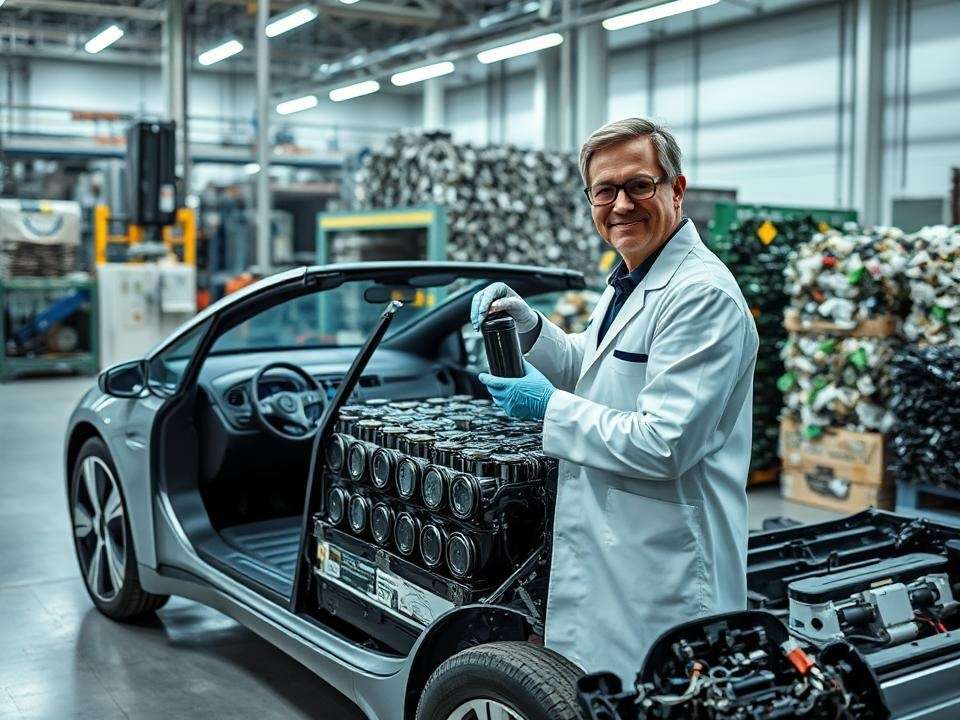[ad_1]

Historically, the electronics sector has generated the highest amount of lithium-ion (Li-ion) battery waste. However, as electric vehicles (EVs) become more prevalent, they are poised to become the most significant source of this waste. China, a leader in the electric vehicle market, has emerged as the largest contributor to EV battery waste. To address this challenge, China has established the world’s highest capacity for battery recycling.
At the forefront of this initiative is BRUNP, China’s largest lithium-ion battery recycling company. In 2020, BRUNP announced a substantial investment of $178 million for a new plant in Hunan province, boasting a recycling capacity exceeding 100,000 tons per year.
As a subsidiary of the prominent battery manufacturer CATL, BRUNP benefits from integrated economics, making its operations more efficient compared to independent recyclers. This synergy highlights the potential of a circular economy, recognized as a pivotal strategy for sustainable development. Co-locating recyclers with raw material suppliers, as seen with BRUNP and CATL, optimizes battery recycling processes.
Globally, approximately 280,000 tons of lithium-ion battery waste is generated annually, with over 70% originating from portable electronics. However, projections indicate that by 2030, EVs will surpass portable electronics as the leading source of battery waste. A lack of standardization in battery packs and cells, combined with the complexities of storage, transportation, and handling of end-of-life (EoL) batteries, have driven up recycling costs and reduced the incentives for recycling initiatives.
Outside of China, various pilot-scale and demonstrator recycling processes are underway, with capabilities ranging from modest operations to semi-production models processing 5,000–7,000 tons annually. Notably, even small plants can achieve financial viability, processing as little as 170 tons per year when utilizing hydro-mechanical methods, contingent upon a high cobalt content and favorable market prices.
The intricate design of lithium-ion batteries differentiates them from lead-acid batteries. An EV battery pack consists of numerous small cells assembled into modules, with hundreds or thousands of these cells forming the complete battery. Dismantling the battery requires careful individual removal of these cells, which is a labor-intensive process fraught with the risk of electric shock and fire.
The variance in battery designs among manufacturers complicates recycling. Many current recycling approaches begin with crushing—an approach borrowed from lead-acid battery recycling. However, this method is less eco-friendly, as it results in increased energy consumption and more ancillary processing chemicals.
In India, the collection of lithium-ion waste batteries from electric vehicles has reportedly reached 2,570.26 metric tons over the past three years, according to the Union Minister of State for Environment, Kirti Vardhan Singh. Despite this, he did not disclose the total volume of lithium-ion waste produced from EVs, making the collected amount appear insignificant relative to India’s recycling capacity.
Major recyclers such as Attero Recycling, Lohum Cleantech, BatX Energies, Gravita India Ltd., RecycleKaro, Exigo Recycling, and Eco Recycling Limited are struggling to source waste batteries for recycling. Some recyclers have raised concerns about the authenticity of reported collection figures, suggesting that authorized agencies may issue misleading certificates for waste battery collection in line with battery waste management regulations.
The complexity of waste battery availability is further compounded by the reuse of EoL EV batteries. Manufacturers advise consumers not to discharge their batteries below 20% capacity, extending their operational lifespan to 8–12 years, depending on charging habits. Even at the end of this period, batteries may still serve as power banks at a reduced capacity, often lasting up to 20 years for energy storage applications.
While this reuse is economically advantageous, it poses an additional challenge for battery recycling programs. Therefore, establishing a standardized process for assessing battery health is critical to determine when a battery should be deemed waste. This necessitates standardized battery designs, particularly since many EV manufacturers utilize different battery connectors.
In summary, striking a balance between the availability of waste batteries and the capacity for recycling at a national level is essential, especially in the context of global market fluctuations. By addressing these challenges through standardization and improved infrastructure, the transition to a sustainable circular economy for lithium-ion batteries can be accelerated.
(The author is former CMD of Scooters India Ltd; Views expressed are personal)
[ad_2]
Source link





